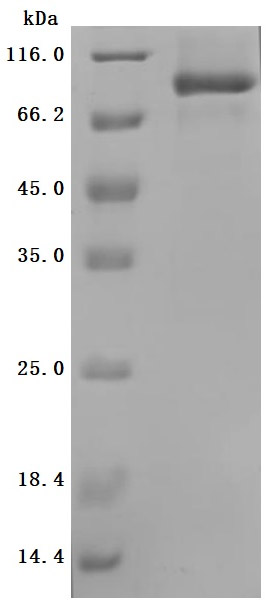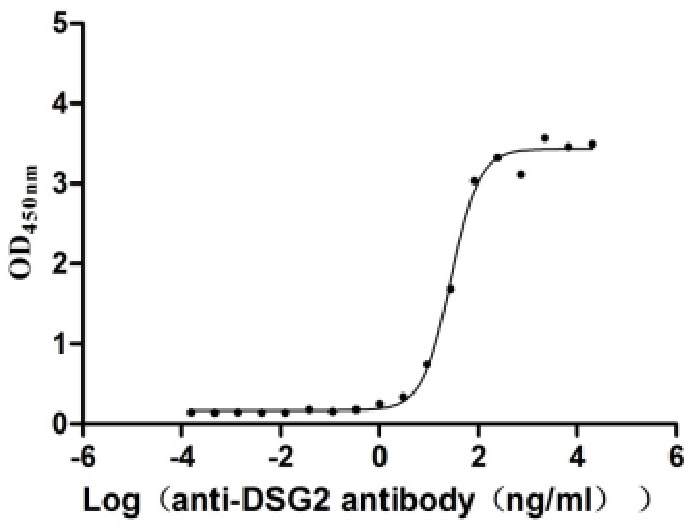This Human DSG2 recombinant protein was produced in Mammalian cell, where the gene sequence encoding Human DSG2 (24-609aa) was expressed with the C-terminal 10xHis-tag. The purity of this DSG2 protein was greater than 95% as determined by SDS-PAGE. Its endotoxin content is less than 1.0 EU/ug as determined by the LAL method. The activity was validated. In a functional ELISA, immobilized human DSG2 at 2 μg/mL can bind Anti-DSG2 recombinant antibody (CSB-RA622752MA1HU) with the EC50 of 20.26-38.00 ng/mL.
Desmoglein 2 (DSG2), also known as CDHF5, is an adhesion protein located on the cell surface and belongs to a 160 kDa transmembrane glycoprotein in the cadherin family. It is the main protein component of bridge-body contact between epithelial cells and can participate in biological processes such as tumorigenesis and intercellular adhesion.
DSG2 is a cancer-related transmembrane glycoprotein, which plays an important role in the occurrence of cancer, especially in the migration and invasion of cancer cells. In recent years, some studies have discovered some substances that can regulate the expression of DSG2. Beyer et al. developed a recombinant adenovirus serotype 3-derived protein JO-1. It can bind DSG2 during the transient opening of epithelial tumor cell junctions, thereby enhancing the antitumor effects of several therapeutic monoclonal antibodies. DSG2 protein can also be used as a biomarker for clinical auxiliary diagnosis, and can be used for preventing or treating cancer.
Abnormal expression and function of the desmoglein family play an important role in the occurrence and development of some diseases. However, the reasons why abnormalities in the desmoglein family lead to disease are not well understood. At present, there are few clinical drugs for DSG2, and the progress of clinical drug development is relatively slow. Studies have shown that some drugs or DSG2 antibodies can regulate the expression and function of DSG2 to achieve the purpose of treating diseases. These studies indicate that the desmoglein family may be used as a new target for the prevention and treatment of some diseases.








